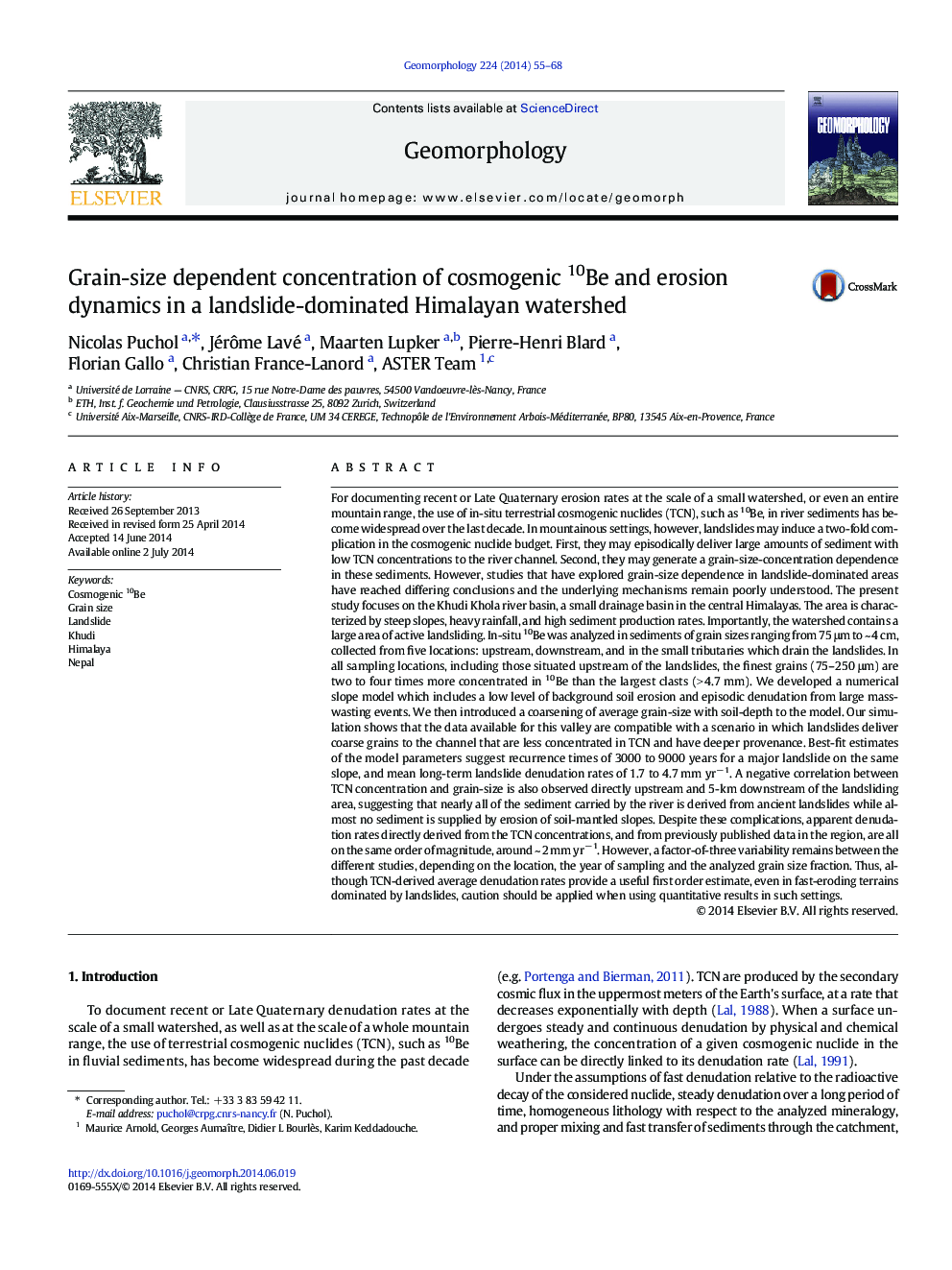| کد مقاله | کد نشریه | سال انتشار | مقاله انگلیسی | نسخه تمام متن |
|---|---|---|---|---|
| 4684421 | 1635425 | 2014 | 14 صفحه PDF | دانلود رایگان |

• 10Be is more concentrated in the finest sands, in all parts of the watershed.
• Numerical simulations suggest that this is due to a size-depth gradient in landslides.
• All of the sediment in the channel may derive from ancient landslides.
• Calculated denudation rates are still in agreement with previously published data.
For documenting recent or Late Quaternary erosion rates at the scale of a small watershed, or even an entire mountain range, the use of in-situ terrestrial cosmogenic nuclides (TCN), such as 10Be, in river sediments has become widespread over the last decade. In mountainous settings, however, landslides may induce a two-fold complication in the cosmogenic nuclide budget. First, they may episodically deliver large amounts of sediment with low TCN concentrations to the river channel. Second, they may generate a grain-size-concentration dependence in these sediments. However, studies that have explored grain-size dependence in landslide-dominated areas have reached differing conclusions and the underlying mechanisms remain poorly understood. The present study focuses on the Khudi Khola river basin, a small drainage basin in the central Himalayas. The area is characterized by steep slopes, heavy rainfall, and high sediment production rates. Importantly, the watershed contains a large area of active landsliding. In-situ 10Be was analyzed in sediments of grain sizes ranging from 75 μm to ~ 4 cm, collected from five locations: upstream, downstream, and in the small tributaries which drain the landslides. In all sampling locations, including those situated upstream of the landslides, the finest grains (75–250 μm) are two to four times more concentrated in 10Be than the largest clasts (> 4.7 mm). We developed a numerical slope model which includes a low level of background soil erosion and episodic denudation from large mass-wasting events. We then introduced a coarsening of average grain-size with soil-depth to the model. Our simulation shows that the data available for this valley are compatible with a scenario in which landslides deliver coarse grains to the channel that are less concentrated in TCN and have deeper provenance. Best-fit estimates of the model parameters suggest recurrence times of 3000 to 9000 years for a major landslide on the same slope, and mean long-term landslide denudation rates of 1.7 to 4.7 mm yr− 1. A negative correlation between TCN concentration and grain-size is also observed directly upstream and 5-km downstream of the landsliding area, suggesting that nearly all of the sediment carried by the river is derived from ancient landslides while almost no sediment is supplied by erosion of soil-mantled slopes. Despite these complications, apparent denudation rates directly derived from the TCN concentrations, and from previously published data in the region, are all on the same order of magnitude, around ~ 2 mm yr− 1. However, a factor-of-three variability remains between the different studies, depending on the location, the year of sampling and the analyzed grain size fraction. Thus, although TCN-derived average denudation rates provide a useful first order estimate, even in fast-eroding terrains dominated by landslides, caution should be applied when using quantitative results in such settings.
Journal: Geomorphology - Volume 224, 1 November 2014, Pages 55–68